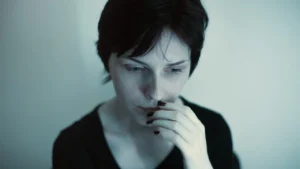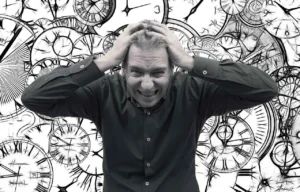In Unlock most common OCD type how I faced different types of OCDs blog we will discuss about OCD and it’s variations.OCDs, or obsessive-compulsive disorders, like a shadow that moves over the mental boundaries, influencing thoughts and behaviour with an invisible hand. It’s the persistent doubt that won’t go away, the constant murmur in your ear. OCD is more than just a disorder; it’s a symphony of compulsion and worry, with each note contributing to the complex dance of the psyche.
 OCD is more than just a group of symptoms; it’s a mindset that imprisons sufferers and keeps them caught in a never-ending loop of uncertainty and terror. It’s the sensation of being powerless in the face of bothersome thoughts and obsessive habits. In this blog we will discuss the most common type of OCD and different types of OCDs
OCD is more than just a group of symptoms; it’s a mindset that imprisons sufferers and keeps them caught in a never-ending loop of uncertainty and terror. It’s the sensation of being powerless in the face of bothersome thoughts and obsessive habits. In this blog we will discuss the most common type of OCD and different types of OCDs
For those with OCD, every day might feel like a struggle to regain control over their own thinking and their autonomy. Notwithstanding the difficulties, comprehension offers hope by illuminating the gloom that hovers over them. We can start to solve the puzzles around OCD and help individuals who are most in need by being empathetic and conscious of the condition.
This explanation gives OCD a moving dual picture of both a psychological condition and a personal battle. By recognising the significant influence that OCD may have on people’s life, it draws readers in and provides understanding of the intricacies of this illness.
Most common OCD type
The most common OCD type ,known as contamination OCD, is characterised by intrusive, recurring thoughts about filth, germs, or contamination. The thought of coming into contact with alleged toxins frequently causes extreme worry or anxiety in those with this kind of OCD. Compulsive behaviors like repetitive hand washing, cleaning, or avoiding specific places or objects might result from these intrusive thoughts. These behaviours are meant to lessen the perceived threat.
The pattern of obsessions and compulsions is the defining characteristic of contamination OCD. Unwanted and upsetting ideas or pictures that persistently enter a person’s head and cause a great deal of worry or anguish are known as obsessions. When contamination OCD is present, the obsessions usually center on worries about being ill, becoming contaminated, or infecting other people. Commonplace actions like shaking hands, touching doorknobs, or using public facilities might set off these obsessions.
People who feel compelled to carry out recurrent actions or thoughts as a result of their obsessions are said to have compulsions. Compulsions in cases of contamination OCD are focused on lessening or eliminating the perceived risk of contamination. Excessive hand washing, showering, cleaning or sanitising objects, avoiding contact with specific surfaces, and donning protective gear like masks or gloves are examples of common compulsions.
Even though these compulsions could offer momentary anxiety relief, in the end they serve to strengthen the OCD cycle by fostering the idea that ritualistic activities can avoid or control the feared outcome (such as sickness or contamination).
OCD contamination can seriously impair one’s ability to go about regular activities and have a fulfilling life. Due to their obsessive tendencies, people may find it difficult to maintain relationships, participate in social activities, or complete tasks that are necessary for their jobs or education. Feelings of guilt, embarrassment, or loneliness can also result from the persistent presence of intrusive thoughts and the requirement to follow rituals.
Different Types of OCDs
1.checking OCDs:
Checking OCD is distinguished by persistent concerns and anxieties about whether specific tasks or behaviors have been accomplished correctly or enough. Individuals with this subtype have intrusive thoughts that something horrible will happen if they do not regularly check particular things. This could entail repeatedly inspecting locks, appliances, switches, and other items to ensure they are secure. Despite constant checking, people frequently experience tremendous worry and doubt, which leads to further compulsive checking habits.
- Regularly check household items like locks, ovens, and electrical appliances to ensure they are switched off and properly secured.
- Health Checking OCD involves excessively monitoring one’s body for symptoms of sickness or damage, such as checking pulse, temperature, and skin for irregularities.
- Checking OCD can severely disrupt a person’s daily routine, including delays in job completion, difficulty with work or education, and strained relationships owing to the need for frequent reassurance or verification.
2.Contamination OCDs
Contamination OCD is characterised by a strong fear of germs, filth, or contamination. Individuals in this group may go to tremendous measures to avoid touching specific objects or coming into contact with suspected pollutants. To cope with their anxiety, they may engage in extensive hand washing, cleaning rituals, or avoidance behaviours.
- Environmental Contamination: Fear of contamination from public areas, bathrooms, or surfaces touched by others.
- Body Contamination: Negative thoughts about bodily fluids, pathogens, or dirt on the skin or in secretions.
Contamination OCD can have a substantial influence on a person’s quality of life, causing them to avoid specific places or activities and interfere with their social connections. Exposure therapy is frequently used as part of treatment to gradually confront frightening circumstances and eliminate avoidance habits.
3.symmetry and ordering OCDs
In the different types of OCDs this OCD type also affects badly.Order and symmetry OCD is characterised by a strong desire for items to be arranged symmetrically or in a particular order. To alleviate anxiety, people with this kind may feel obliged to organise objects, line them properly, or stick to rigorous rituals.
- Spatial Arrangement: Aligning goods on shelves or desks.
- Compulsion to order goods numerically or alphabetically, follow patterns, or finish tasks in a precise sequence.
4.Intrusive thoughts OCD
Intrusive thoughts. OCD involves distressing and unwanted thoughts, which frequently involve harm to oneself or others. These thoughts can be divided into
- Violent thoughts include thoughts of harming oneself or others, such as stabbing or punching someone.
- Individuals may experience upsetting or inappropriate sexual fantasies or pictures
- Blasphemous Thoughts: Images or thoughts that contradict religious beliefs or values might cause feelings of guilt or humiliation.

Individuals have intrusive thoughts. OCD sufferers may feel extreme worry and shame about these thoughts, even if they have no intention of acting on them. Treatment usually includes exposure therapy to confront frightened ideas and lessen avoidance habits, as well as cognitive restructuring to challenge erroneous beliefs.
5.Hoarding OCD
Hoarding OCD is defined by difficulties abandoning possessions, regardless of their true value. Individuals with this kind may amass a large number of belongings, resulting in congestion and trouble navigating living spaces.
- Sentimental hoarding involves holding onto goods for emotional reasons, even if they serve no practical function.
- Information hoarding refers to the collection of newspapers, magazines, or books with the expectation of future use.
- Hoarding OCD can have a substantial impact on a person’s living environment, posing safety risks and straining relationships
6.OCD related to Rumination
Ruminations OCD is characterised by constant worry or overthinking about a specific topic or issue. Individuals in this category may constantly analyse previous mistakes, future occurrences, or hypothetical possibilities, causing anxiety and anguish.
- Obsessive replaying of past mistakes or regrets, evaluating what went wrong and what may have been different.
- Obsessive concern about future events, anticipating worst-case scenarios, and feeling powerless to avoid them.
- Ruminations OCD can be especially stressful because of the ongoing loop of negative thoughts and emotions.
7.Counting and repeat OCD
Counting and repeat OCD is defined as compulsive counting or repetition of words, phrases, or activities. Individuals with this sub type may experience feelings of unease or worry if they do not conduct these rituals on a regular basis or in a precise manner. This can include counting steps, repeating sentences silently, or participating in other repetitive activities until they are pleased.
Your experience with many types of OCD illustrates the condition’s complexity and diversity. Each subtype provides distinct obstacles, adding to emotions of being stuck in repetitive activities and intrusive thoughts. Seeking the right treatment and support can help you manage your symptoms and improve your overall quality of life.
Personal experience with OCDs
Throughout my journey through the various varieties of OCDs, I’ve faced countless hurdles. It felt like a solitary battle at times, navigating the maze of intrusive thoughts and obsessive habits. There were times when the weight of OCD felt too much to bear, and I wondered if relief would ever come.
But, despite the darkness, I held out hope. I reminded myself that I wasn’t alone in my battle, that people understood and empathized with what I was going through. I found comfort in knowing that there were resources and support systems available to help me get through the darkest of days.
Despite the difficulties, I refused to give up hope. Instead, I persisted, taking modest steps each day toward healing and recovery. I learnt to be patient with myself, acknowledging that growth takes time and setbacks are a normal part of the process.And gradually but steadily, I began to glimpse the light at the end of the tunnel.
Through therapy, medication, and the unflinching support of loved ones, I discovered a way forward—a way to break free from the chains of obsession.I’d like to send an encouraging word to any of my readers who are battling with OCD. I understand how difficult it can be to go through each day with uncertainty and anxiety, but I want you to know that you are not alone.
